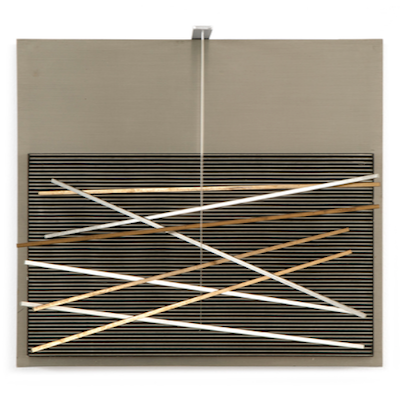
Details
Artist
Styles
12 Multiples Terragraphs (with sand) on canvas mounted on wood in a limited edition of 36 hand signed & numbered // Ouroboros #5 by Günther Uecker is a terragraph print with sand, blending texture and symbolism in a unique, tactile medium. Created in 2018 as part of a limited edition of 36, this artwork features circular, swirling patterns reminiscent of the ancient Ouroboros symbol, representing cycles and eternity. The golden sand patterns on a neutral background give the piece a raw, earthy quality, with dynamic brush-like strokes forming concentric rings and gestures that evoke movement and energy. Uecker’s use of sand as a medium emphasizes the transient and cyclical nature of life, inviting the viewer to consider themes of renewal and the continuous passage of time.
Ouroboros #5, 2018
form
Medium
Size
95 x 95 cm
- Inches
- Centimeters
Edition
Price
- USD
- EUR
- GBP
Details
Artist
Styles
12 Multiples Terragraphs (with sand) on canvas mounted on wood in a limited edition of 36 hand signed & numbered // Ouroboros #5 by Günther Uecker is a terragraph print with sand, blending texture and symbolism in a unique, tactile medium. Created in 2018 as part of a limited edition of 36, this artwork features circular, swirling patterns reminiscent of the ancient Ouroboros symbol, representing cycles and eternity. The golden sand patterns on a neutral background give the piece a raw, earthy quality, with dynamic brush-like strokes forming concentric rings and gestures that evoke movement and energy. Uecker’s use of sand as a medium emphasizes the transient and cyclical nature of life, inviting the viewer to consider themes of renewal and the continuous passage of time.
- Recently Added
- Price (low-high )
- Price (high-low )
- Year (low-high )
- Year (high-low )
What is kinetic art?
Kinetic art is an international movement that emerged in the 1920s and gained prominence in the 1960s, referring to art that involves both apparent and real motion. It encompasses any medium that includes movement, either relying on actual motion for its effect or being perceived as moving by the viewer. Early examples include canvas paintings designed to create optical illusions of movement. Today, kinetic art often refers to three-dimensional figures and sculptures, such as those operated by machines or those that move naturally. The movement covers a variety of styles and techniques that frequently overlap.




























